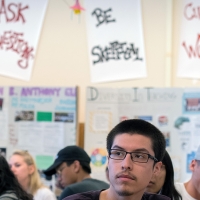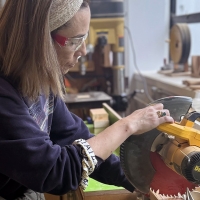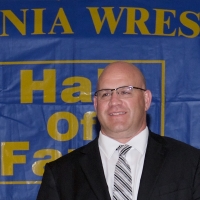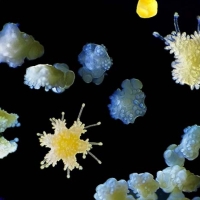Original story by Kanaga Rajan with edits by University Development
Many of us are familiar with counting tree rings to determine a tree’s age, but according to Triana Anderson, they also reveal valuable information about climate change. For her graduate thesis project in the Earth and Climate Science program, Triana applied a novel approach, using trees as a gauge for coastal climate change over thousands of years. Her expertise has earned her a Fulbright scholarship to do a parallel project in Chile for nine months after she graduates this fall.
“The idea is that Chile and California have two very parallel climate systems, but one is in the northern hemisphere. There are a lot of questions that climate scientists have about how coastal systems will change as the planet warms,” says Triana. Studying trees in California and Chile will help identify how climate change differs in the two hemispheres.
Triana, a San Franciscan native, has unknowingly been preparing for this Fulbright adventure her whole life. Having grown up in Northern California, she spent a lot of time outdoors listening to her dad describe how the coast has changed since his childhood. “I think that helped bring a climate change perspective at a young age — even though I wouldn’t have called it that as a kid,” she said.
Her choice to study in Chile? That was also intentional. She attended Spanish-speaking immersion schools since she was 5 years old, loving it so much that she minored in Spanish as an undergrad. “I think it’s always been a goal to go live in a Spanish-speaking country and fully solidify those pathways that are in my brain,” she explained. She’s excited that a Fulbright experience will fuse her scientific and personal goals.
The novel technique Triana is using in Chile was developed at SF State, where she received two $10,000 scholarships in support of her studies and work. In 2021, Triana was awarded the John A. and Anna Monteverdi Fellowship in Atmospheric & Climate Sciences, which was funded by Emeritus Professor John Monteverdi, Jr. as a tribute to his parents. Professor Monteverdi was a member of the faculty of the Earth & Climate Sciences Department and the scholarship was created to support outstanding students in the department in which he taught. A year later, Triana received the Professor Emeritus Dave Dempsey and Rebecca Douglass Scholarship in Earth & Climate Science. The late Professor Dempsey taught at the College of Science & Engineering for 19 years until his retirement in 2018. He passed away in 2020.
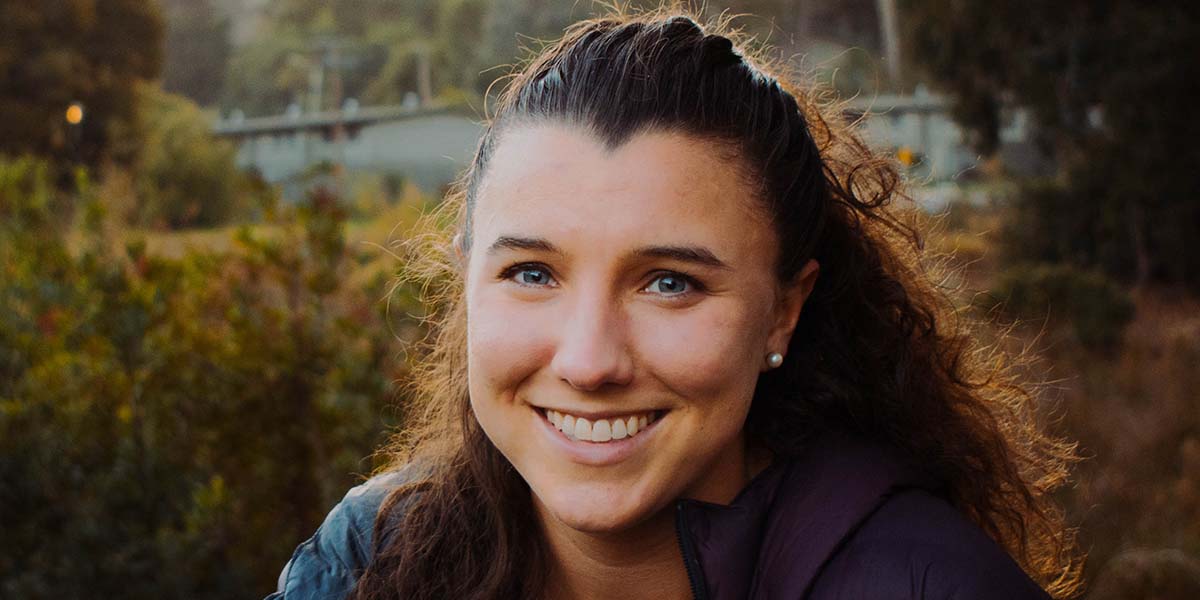
“The Monteverdi Fellowship has gifted me additional flexibility in deciding my next steps, allowing me to consider what comes next with less financial encumbrance, and for that I am extremely grateful… [The Dempsey/Douglass Scholarship] will allow me to invest myself in my studies with fewer outside distractions, like working another part-time job, and will mean that I have more time to engage with my department and with the school.”
—Triana Anderson
According to Triana, these scholarships provided her with the ability to focus on her work without accruing a crippling amount of debt, “The Monteverdi Fellowship has gifted me additional flexibility in deciding my next steps, allowing me to consider what comes next with less financial encumbrance, and for that I am extremely grateful… [The Dempsey/Douglass Scholarship] will allow me to invest myself in my studies with fewer outside distractions, like working another part-time job, and will mean that I have more time to engage with my department and with the school.”
Triana came to SF State after cold-calling and instantly clicked with her future thesis adviser, Associate Professor Alexander Stine. He introduced her to the idea of using trees to evaluate climate change, and she was hooked on the idea. Traditionally, scientists — like those in Chile — measure variability in tree ring width to determine climate fluctuations. Some researchers glean more info by looking at the cellular structure of wood but are limited by the small sample of wood cells they can manually assess under a microscope.
For her graduate work, Triana coupled a new high-resolution imaging technique to assess cellular structure with an artificial intelligence algorithm to take mass measurements of lots of cells from lots of trees. It allows her to look at both temperature and precipitation changes together, whereas traditional methods force scientists to focus on temperature or precipitation separately. Because she can look at larger sample sizes, she can also average out noise from confounding variables like insect infestations or competition between species.
She’s been using this approach to study changes in California’s coastal climates. Studies show a decline in coastal fog over the last 100 years, but Triana points out that’s a relatively short period of time when considering climate trends. Her study uses coastal redwoods to look at climate changes over 2,000 years.
“[Redwoods] live that long, which is insane. It’s crazy to think that there are living organisms that have experienced all of that history,” she said. The Chilean researchers are eager to apply her approach in their studies.
She’s not entirely sure what will come after the Fulbright, but she hopes a future doctoral degree and teaching are in the mix. At SF State, she was excited to be chosen to teach an oceanography class for non-science majors. She’s glad that community work is part of her Fulbright program, too, and is hoping to teach science education or youth girls’ sports in Chile.
“I love working with kids. I think it’s so cool to watch their brains make all those little connections,” she explained, noting that the youngest community members are the ones to be most impacted by climate change.

